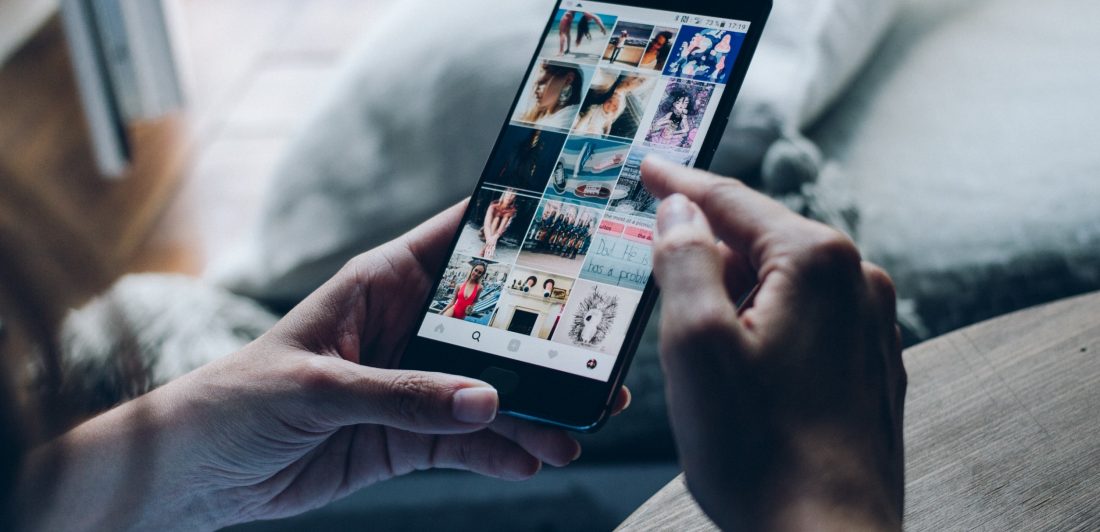As parents know, most teenagers are practically inseparable from their phones, which they use to access social media like TikTok and Instagram. What parents may not know is that there is a serious problem with social media and mental health. While issues can arise from all social media platforms, Instagram in particular has a greater correlation with mental health issues, as in 2017 it was rated the worst platform for mental health.
How Does Instagram Affect Mental Health?
In September 2021, The Wall Street Journal revealed that Facebook’s own research showed a correlation between Instagram and decreasing mental health. For example, Facebook research showed that 6% of girls in the US and 13% of girls in the UK that contemplated suicide said it was driven by Instagram. Additionally, one-third of the girls reported that Instagram made them feel worse about their body image.
Recent studies have suggested that Instagram causes increases in mental health issues for teens, particularly girls. Researchers have linked spikes of depression, anxiety, eating disorders, self-harming behaviors, suicidal ideation, and suicide attempts with Instagram use. Facebook Whistleblower Frances Haugen warns that this issue is serious and even that “teenagers are killing themselves because of Instagram.”
Why Are Teens So Vulnerable?
There are several reasons that teenagers, especially girls, are more vulnerable to the damaging effects of social media. First, teenagers are naturally drawn to social media to connect with their friends. Instagram, Snapchat, TikTok, and other social media platforms are integral to the social scene for teenagers. These platforms are often the center of teens’ social lives. Many teenagers stay on social media simply because they don’t want to feel left out. They don’t want to be the only one that doesn’t get the joke, the only one not on the newest trend, the only one not invited to hang out with their friends.
Additionally, experts point out that teens have a biological drive for social connection and popularity. During adolescence, the areas of the brain linked to social rewards start to develop significant increases in dopamine and oxytocin receptors. Dopamine and oxytocin are “feel good” chemicals that reward the brain for a certain behavior, making it seem pleasurable. The release of these chemicals motivates teens to seek approval from their peers. As Mitch Prinstein, APA’s chief science officer said, “Kids have a biological vulnerability to want social rewards, and now we’re handing them a way to get it– on steroids.”
The idea that teens search for validation and social connection amongst their peers is certainly not new. What is new is the infinite and addictive nature of social media. Unlike other media like magazines, social media is available 24/7 and has new, exciting, and never-ending content. Many teens find themselves becoming addicted, literally, to the constant stream of new content to enjoy right at their fingertips.
Understanding Instagram: How Does Instagram Harm Teen Mental Health?
Researchers are starting to understand the effects that Instagram has on teen mental health. However, we must also understand the root of the problem. We need to know what mental processes are happening and how Instagram makes them worse. Once we understand these issues, changes can be made to help teenagers handle social media in a healthy way. So far, experts have pointed out three ways Instagram harms teen mental health.
A Culture of Comparison
The first way Instagram harms teen mental health lies in the Instagram culture. At its core, Instagram cultivates a culture of comparison. While other apps are mostly used for entertainment or catching up with friends, Instagram encourages users to present their best self to the world: to show off how great their life is, what amazing trips they’ve taken, who they’re with, and how much fun they’re having while doing it.
This culture of comparison promotes digital status-seeking. How many likes a person gets on a picture is equivalent to how many friends they have or how popular they are. To get likes, they have to show off the very best they have to offer, even if it’s fake. What many teens know but can’t always see is that photos posted on Instagram are often heavily edited and styled. Instagram users rarely snap a quick selfie to post. They often take multiple pictures from the best angles, in their best outfits, with the best lighting. Then they spend time editing the photo. All the editing, filters, and unseen effort blurs the lines between perfection and normality. Teens start to compare the perfect images they see on the screen with their reality. Sadly, they often feel they don’t measure up.
Unfortunately, the feeling of not measuring up can come with some serious mental health issues. For most people, feeling as if others are comparing them or that they need to compare themselves to others is anxiety-inducing. It’s no wonder that this culture of comparison is linked to increases in depressive symptoms, social anxiety, body image concerns, and decreased self-esteem.
Designed for Addiction
The second way Instagram harms teen mental health is rooted in its addictive design. The goal of any social media company is to keep users on the platform for as long as possible and to keep them engaged as much as possible. Instagram doesn’t have any features designed to help people spend healthy amounts of time on the platform. It’s designed to keep users scrolling for as long as possible. Why? Because the longer the user is on the platform, the more ads they will view. More ads viewed means more money for the company.
Researchers who have studied the effects of social media on the brain note that social media activates the reward center of the brain. This positive reinforcement occurs with the release of dopamine, the “feel good” chemical. Dr. Jacqueline Sperling, a psychologist at McLean Hospital, compares the act of engaging with social media to playing a slot machine. “The idea of a potential future reward keeps the machines in use. The same goes for social media sites. One does not know how many likes a picture will get, who will ‘like’ the picture, and when the picture will receive likes. The unknown outcome and the possibility of a desired outcome can keep users engaged with the sites.” Even when teens want to stop scrolling, they feel like they can’t because their brains are literally addicted to social media.
The Algorithm Effect
The third way Instagram harms teen mental health is through the algorithm effect. Instagram feeds are governed not by one algorithm, but many. However, one overarching metric— meaningful social interactions—governs each algorithm. These algorithms basically try to learn who or what is meaningful to the user so that it can rank the content it thinks they will engage with. As the algorithms learn about a person’s interests and rank content, the algorithms will rank the content the person engages with higher and show them more content related to that topic or user. If a user engages with a certain topic frequently, Instagram will fill their feed with content and advertisements related to that topic.
While the algorithm in itself is not destructive, the ranking system can cause problems when the content is harmful. As Facebook Whistleblower Frances Haugen points out, the algorithm looks for content to lure in users. It can start out as something harmless, like healthy eating. However, the more the user engages with content related to healthy eating, the more intense the content becomes and the more frequently it is shown to the user. Soon the algorithms might flood the user's feed with posts of calorie counts, weight loss advertisements, body shaming, and other behaviors related to eating disorders.
Abby's Story
For Newcastle teenager Abby, her experience started when she liked a few pictures of some sad quotes after being bullied at school. Over time, the Instagram algorithms led her in a downward spiral by exposing her to content related to self-harm and suicide. Abby says she repeatedly interacted with anti-recovery groups that glamorized self-harm and suicide on Instagram. Some users even asked Abby to self-harm with them and encouraged her to end her life. Unfortunately, Abby’s experience is not totally unique. Research by the Center for Countering Digital Hate found that the Instagram algorithm promoted content and accounts referencing self-harm, suicide, or eating disorders to one in six accounts who had engaged with similar content.
What many people don’t understand about the Instagram algorithms is that they show users content they think users will engage with, not necessarily content that users want to see. Many people, like Abby, may engage with content that is harmful even if they don’t want to see it. While users can rewire their algorithms to show them content they do want to see, doing so requires them to have the willpower and determination to stop all engagement with content related to topics they want off their feed. While possible, this often proves to be very difficult.
What Should Parents Do to Protect Their Kids?
Worried parents may feel the urge to yank their teen's phone away and delete all of their social media. However, experts advise against this, as social media is crucial to many teens’ social lives. Here’s what parents can do to help protect their kids instead:
1. Try to understand.
Often, teens feel like they’re alone in mental health issues related to social media use. Parents who aren’t on social media platforms as often may not understand the addictive qualities the platforms possess. Worse, parents may dismiss their teen’s struggles as a lack of accountability. The first, most crucial step to protecting teenagers is to try to understand their struggles instead of judging them.
2. Talk about it.
The next step to protecting kids from the dangers of social media is to talk about them. Experts suggest asking open-ended questions about how social media makes teens feel and about the reality of what they see on the screen. Parents should also encourage their teens to think critically about the content they see so they don’t get stuck in the comparison culture.
3. Model healthy behavior.
Most things can be healthy in moderation, social media included. Parents who have social media on their phone or other devices should model healthy behavior for their kids. This may look like spending less time on social media, unfollowing idealized content, and following content unrelated to appearance. To take the extra step, spend quality time with the family away from electronics.
The Carlson Law Firm Can Help
Facebook’s own research has shown that Instagram harms teen mental health. Instagram’s culture of comparison, addictive design, and algorithms often contribute to serious mental health disorders. No teen should have to live with mental health issues caused by social media. If your teen is suffering from severe mental health disorders such as depression, suicidal ideation, or eating disorders caused by social media, we can help you get justice. We care, and we can help.




